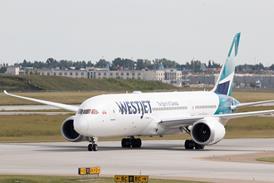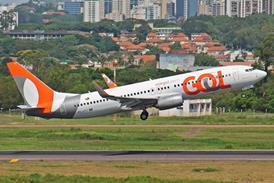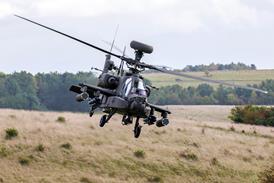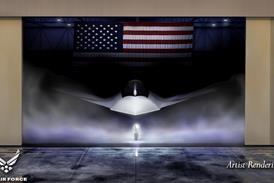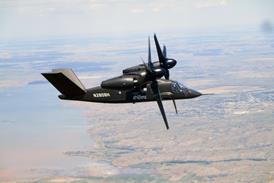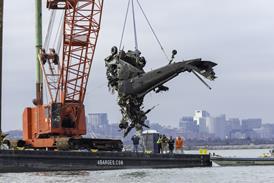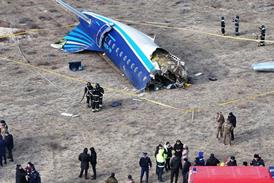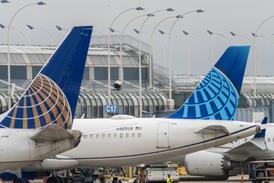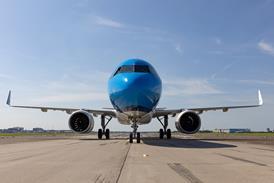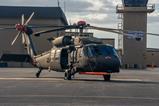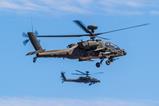More details are emerging about the second major shake-up of the US Army’s aviation enterprise in less than two years.
The service now confirms it will divest all of its remaining Boeing AH-64D attack helicopters, the older variant of the combat-proven Apache platform, and operate only the latest AH-64E.
Older models of the Sikorsky UH-60 Black Hawk, including the UH-60L, will also be targeted for retirement. The army had already cancelled the UH-60V modernisation programme under its 2024 aviation realignment, which also saw the cancellation of a new armed scout rotorcraft.
The goal of the divestment, according to vice chief of staff General James Mingus, is to “pure fleet” the army’s rotary-wing assets to just one type per category.
That means a fleet of UH-60Ms, AH-64Es and Boeing CH-47F Chinooks.
“Black Hawks are going to be around for a long time,” Mingus said at the service’s annual aviation conference in Nashville, Tennessee on 14 May. “Chinooks are going to be around for a long time. Apaches are going to be around for a long time. We just want to pure fleet as much as we can.”
The army has 91 AH-64Ds in service, according to Boeing, with the older models representing roughly 10% of the service’s total Apache fleet of some 839 aircraft.

Fiscal year 2025 budget documents indicate the army has a total fleet procurement goal of 812 AH-64Es, which it will reach with a combination of new-build and remanufactured aircraft. Mingus says the service does not plan to buy additional examples to offset the retiring D-models.
Boeing is on its second multi-year contract with the US Army to remanufacture older D-models into the latest AH-64E standard. The company’s production site in Mesa, Arizona handles both remanufacturing work and new-build aircraft.
The army has yet to decide the fate of the retiring AH-64Ds, according to Boeing. One option under discussion is selling or transferring the aircraft to an overseas partner.
“There are international countries that would like to have them,” notes Mark Ballew, director of business development for Boeing’s vertical lift business.
Poland is notably set to receive eight AH-64Ds on lease from the US Army, as Warsaw awaits delivery on its $10 billion order for 96 E-model Apaches.
Boeing’s current contract with the US Army covers remanufacturing work through the 2027-2028 timeframe, although the company sees existing demand to sustain AH-64E production out to 2032.
“We have tremendous international demand,” notes Christina Upah, Boeing’s head of attack helicopter programmes.
Notably, army leaders say there are no plans to cut the marquee Future Long-Range Assault Aircraft (FLRAA) tiltrotor, recently named the MV-75.
“We are 100% committed to FLRAA,” Mingus says. “Not just committed to the programme, but how do we do it faster.”
Top officials at the Pentagon, including secretary of defense Pete Hegseth and army chief of staff General Randy George, announced the Army Transformation Initiative in late April.
As part of that move, the army said it would phase out “obsolete” and “outdated” aviation platforms, specifically citing the AH-64D. The reductions will also see the army cut 11 air cavalry reconnaissance squadrons, which currently operate the Apache in conjunction with the Textron RQ-7B Shadow uncrewed aerial system (UAS).
Mingus says the cuts are meant to free up resources, while improving efficiency and battlefield effectiveness.
“What we wanted to absolutely do was preserve combat power,” he explains. “That’s why we went after things that we felt like we didn’t need for the next fight.”
Several notable programmes fell into that category, including the Future Tactical UAS and the Improved Turbine Engine programme to deliver a propulsion upgrade for the Apache and Black Hawk fleets.
That effort had produced the GE Aerospace T901 turboshaft, with which Sikorsky will continue progressing toward flight testing aboard a UH-60M under the current integration contract.
Mingus says procurement of the new engine is now on hold, with decisions about any further development work still a matter of discussion.
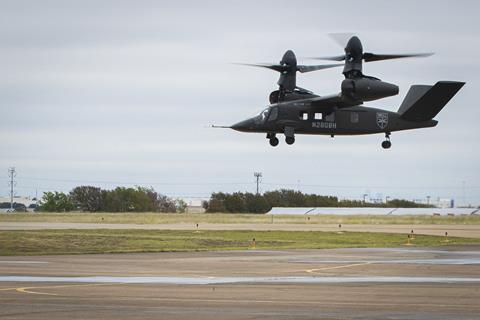
Several other army contracts of significant consequence to the US rotary-wing industry also remain at large, including pending orders for the CH-47F Block II and UH-60M.
Boeing has thus far delivered four production-model Block II Chinooks to the US Army, with a total of nine on contracted order. These are separate from the MH-47Gs ordered by US Special Operations Command.
The army in 2024 agreed in principle to a full-rate order of the latest CH-47F, in a major boost for Boeing’s vertical lift business. Germany has also signed on the programme in 2023, with an $8.5 billion deal for 60 aircraft.
Although the US Army has not yet formally agreed to a full-rate production contract, Boeing H-47 programme manager Heather McBryan says: “We have not been provided any specifics that anything has been has changed. We continue to deliver aircraft off our production line for Block II and we continue to submit proposals and continue to negotiate contracts.”
Sikorsky is in a similar situation, currently negotiating with the US Army for an 11th multi-year production contract for new UH-60Ms, which would cover aircraft for both the USA and Foreign Military Sales (FMS) customers.
That deal would extend Black Hawk production at Stratford, Connecticut out to 2032, providing a critical source of revenue for Sikorsky as the company seeks to roll out new product lines like the rotor-blown-wing UAS and compete for new development work under the NATO Next Generation Rotorcraft Capability effort.
Sikorsky’s current UH-60M contract ends in 2027.
Jay Macklin, director of army business development for Sikorsky, says the company hopes to ink a deal by December 2026.
Macklin and Sikorsky general manger Rich Benton both appeared relatively sanguine in Nashville about the company’s prospects for continued UH-60 production, even as the US Army moves toward the end of new orders.
“There continues to be a lot of interest in Black Hawk internationally,” Macklin says.
Benton notes that overseas demand for Black Hawks exceeded the company’s production cap of 255 aircraft under the current multi-year contract, with FMS orders expanding production to 272 examples.
“We still think there is going to be a place for it for a long time,” he says.
Although the latest cuts have thrown much of the army’s plans into uncertainty, the service for now plans to operate some number of UH-60s as far out as 2070.
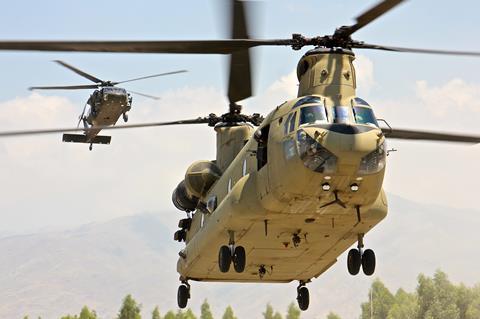
Service leaders tell FlightGlobal they expect the Black Hawk and the new MV-75 will operate together for roughly the first 10-15 years of the new tiltrotor’s service life, as production ramps up and the fleet expands.
Benton sees opportunity there as well.
“We like to think about the Black Hawk as a complimentary asset to the FLRAA,” he says.
The company is also exploring more civil applications for the venerable H-60 line, such as adapting Sikorsky’s Matrix autonomy system for use in firefighting applications.
All of the USA’s vertical lift providers face a challenging environment, with the country’s largest rotary-aviation operator facing steep budget cuts and minimal appetite for costly new development programmes.
The current political climate in Washington is proving highly unpredictable for the defence industry, with President Donald Trump regularly generating outlandish headlines, most recently by suggesting that Lockheed Martin will soon build a twin-engined variant of the F-35 stealth fighter, which he refers to as the ‘F-55’.
Lockheed declines to comment about the suggestion, but notes: “We thank President Trump for his support… and will continue to work closely with the administration to realise its vision for air dominance.”
It may be some time before the industry gets any certainty, both for political and geostrategic reasons.
“We always joke that two things change the outcome of programmes: elections and wars,” says Brigadier General Matthew Braman, aviation director on the US Army’s general staff.
The USA will hold congressional elections in 2026 and a elect a new president in 2028, a contest for which the second-term Trump is constitutionally limited from entering.


